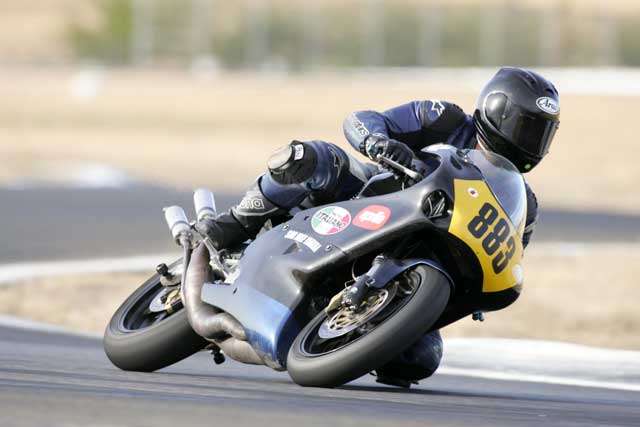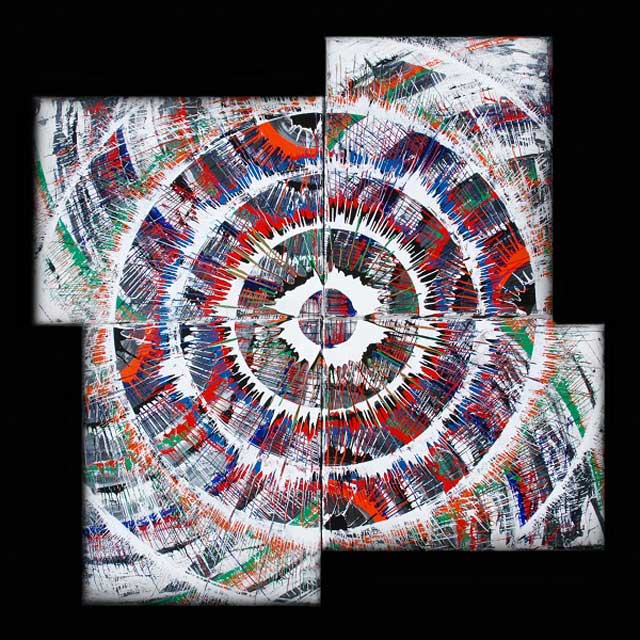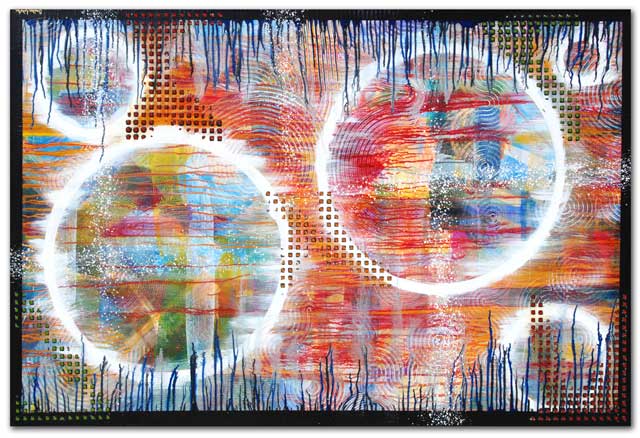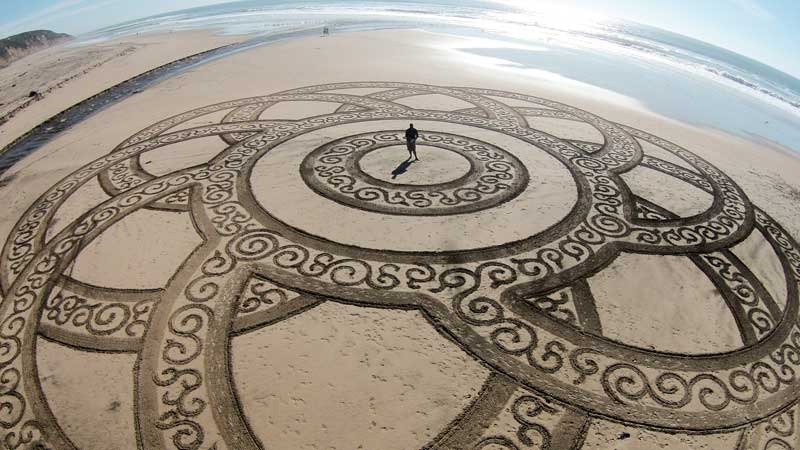Brandon Anderton’s story of becoming an artist is an unfamiliar one. He hasn’t been drawing since he was a young boy, and he never dreamed of being an artist when he grew up. In fact, until 2009, when a work-related accident left him seriously injured and ended his career path as an electrician, Anderton wasn’t thinking about art on any level.
The 39-year-old California native was born and raised in Fresno and currently resides in San Jose. His childhood was fairly typical for a California youth; he was skateboarding from a young age all the way through his late high school years. “I built a skatepark in my barn at the house,” recalls Anderton with a smile. “Played Anthrax and Suicidal Tendencies ’til 4am in the morning, just skating.”
He goes on to describe his high school years as nothing much to brag about academically. However, Anderton did reveal an aptitude for electronics when he was sent to Duncan Polytechnical High School, a model school for career technical education. After successfully building a small working electromagnetic projectile launcher, a.k.a. a railgun, he and a few classmates were inspired to see how far they could take this newfound knowledge. Using some larger electronic components they found laying around the school, they successfully built a railgun powerful enough to blow a hole through the shop’s cinder-block wall. The infamous incident unfortunately led to them all being expelled.

Shortly after high school, Anderton transitioned from skateboarding to motorcycle road racing. It wasn’t long before he gained sponsorship by brands like Ducati, Aprilia, Moto Italiano, Avon Tyres, and others. By the time he walked away from the sport, circa 2007, a good portion of his left side was reinforced by titanium. “I’ve broken my legs three times apiece, and my arms twice each in various ways,” explains Anderton. “My pelvis, in half, once, scapula on left side once, right and left clavicles once apiece, and multiple ribs on both sides.”
To put it mildly, Anderton is no stranger to injury. But prior to 2009, when he suffered a serious fall working as an electrician, his body had always bounced back. Anderton was hopeful that even though his 2009 recovery seemed slower, he would eventually return to normal. Unfortunately, a session with his physical therapist forced Anderton’s body beyond its current limits, leaving him in a state of chronic pain for years to follow.

Anderton began going to see Christine Hirabayashi, an art therapist at Bay Area Pain and Wellness Center (BAPWC) in Los Gatos, in 2011. Initially, he didn’t really want to be there. But, he remembers, “the thing that I really liked about Christine and I think the reason why she resonated with me so much is that she understands that humans aren’t compartmentalized machines in an absolute sense.” Anderton considered himself a fairly stereotypical guy, used to holding it all in, and drawing wasn’t something he saw coming naturally.
His first real breakthrough came one day when no one was around, and he spotted a drill amidst the art supplies. Anderton attached it to a canvas and turned it into a spin art machine. Despite making a serious mess, “Building the spin art machine was what got me committed to being artistic,” Anderton says.
“From that point on,” continues Anderton, “I’ve just been working on myself and sorting through my stories and embracing more of the art. Since I had never done anything really ‘artistic,’ I feel like it’s an undefined and unexplored playground. You just get out there and go. There are no boundaries. But the scary part was just allowing myself to just go through some of my stories and be with my emotions. Let them destroy me and do what they are going to do. Just honoring that, that’s what needs to happen.”

When asked how the art therapy was helping him, Anderton is characteristically to-the-point. “It bypasses all this precognitive bullshit that we’ve developed to operate inside of our society,” he says. “It’s a very patriarchal society. Everything’s linear and put in a box, and you do this to do that, you know what I mean? But art for me, and thinking about art and expressions of art bypasses all that. It totally skirts that cognitive, left-hemisphere thinking and it just goes right to your emotional side.”
Anderton continues: “The best example of that I’ve seen is with Barron Storey’s work,” referring to Storey’s 2013 Suicide exhibition (full disclosure: the exhibition took place at Anno Domini Gallery, of which I am a co-founder). “I had to keep coming back. It was like a compulsion. He gets it. I feel like in his execution, what he drew, in the context it doesn’t have to make sense. I could look at any part of that and totally feel what he was feeling via proxy, my own projection, but I feel a kinship with him. I was in awe of both his honesty and the content.”
Anderton continued seeking other ways to express himself artistically. “I’ve always been a micro-to-macro thinker,” he tells me, “just on an endless treadmill. How far does this go? One of the things I’ve come to the conclusion on is that all things are relative. They are all interrelated and each discipline is a different manifestation of the same concept.”
This sort of thinking led Anderton to exploring sacred geometry through his artistic practice. “I would see these things and I would see the math behind it and it was like an alien joy,” said Anderton. “I really believe that all things intertwine. There’s no separation from anything or anyone. They’re just different expressions.”

Anderton journeyed into these concepts originally creating large paintings on canvas. Staying true to his micro-to-macro tendencies, Anderton eventually found himself on the beach one day dragging a piece of driftwood, drawing patterns in the sand until the next wave would roll in, erasing his marks. His compulsion to see how far he can take something has since evolved into creating giant intricate drawings in the sand during low tide. He’s traded the driftwood for ropes, spikes and an assortment of rakes. On the day I visited him back in January at Pomponio State Beach in San Gregorio, Anderton had sketched out a grid in the sand before I arrived — and proceeded to create a large, intricate sand drawing as I and other curious passersby looked on. Knowing Anderton’s condition, that’s a remarkable feat. The large temporary mandala-like drawings can take him hours to create; most days he can hardly stand for more than a few minutes at a time without the pain creeping in.
Weather and body permitting, you can find Anderton along the coast between Santa Cruz and Half Moon Bay a few times a week. It’s as much a meditation for him at this point as it is an expression of art.
“It really doesn’t matter what it is you do. As long as you are awake and present and moving, that is your path,” Anderton says. “It’s what you are here to do. As long as you are up and experiencing things, you are walking that path.”
Learn more about Brandon Anderton and his ongoing work at FRP Art (Functional Restoration Program Art).